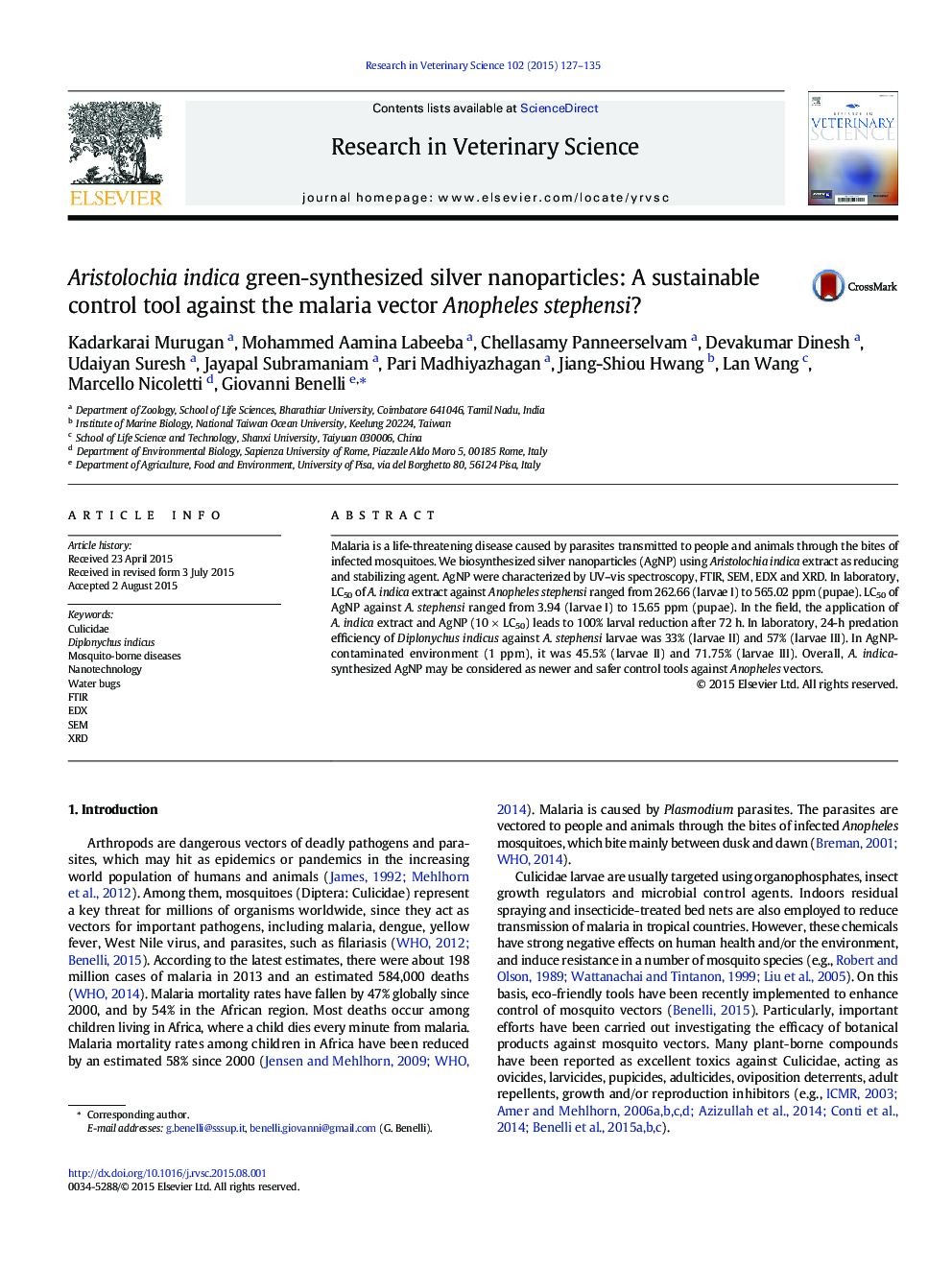| Article ID | Journal | Published Year | Pages | File Type |
|---|---|---|---|---|
| 5794589 | Research in Veterinary Science | 2015 | 9 Pages |
â¢Aristolochia indica-synthesized Ag nanoparticles (AgN) were characterized by a variety of biophysical methods.â¢LC50 of AgN vs. Anopheles stephensi ranged from 3.94 to 15.95 ppm.â¢Water bug predation vs. A. stephensi was 33% (II instar) and 57% (III instar).â¢In AgN-treated sites, predation was 45.5% (II instar) and 71.75% (III instar).â¢Low doses of AgN may enhance the control of A. stephensi in waterbug-based biocontrol programs.
Malaria is a life-threatening disease caused by parasites transmitted to people and animals through the bites of infected mosquitoes. We biosynthesized silver nanoparticles (AgNP) using Aristolochia indica extract as reducing and stabilizing agent. AgNP were characterized by UV-vis spectroscopy, FTIR, SEM, EDX and XRD. In laboratory, LC50 of A. indica extract against Anopheles stephensi ranged from 262.66 (larvae I) to 565.02Â ppm (pupae). LC50 of AgNP against A. stephensi ranged from 3.94 (larvae I) to 15.65Â ppm (pupae). In the field, the application of A. indica extract and AgNP (10Â ÃÂ LC50) leads to 100% larval reduction after 72Â h. In laboratory, 24-h predation efficiency of Diplonychus indicus against A. stephensi larvae was 33% (larvae II) and 57% (larvae III). In AgNP-contaminated environment (1Â ppm), it was 45.5% (larvae II) and 71.75% (larvae III). Overall, A. indica-synthesized AgNP may be considered as newer and safer control tools against Anopheles vectors.
Graphical abstractDownload full-size image
